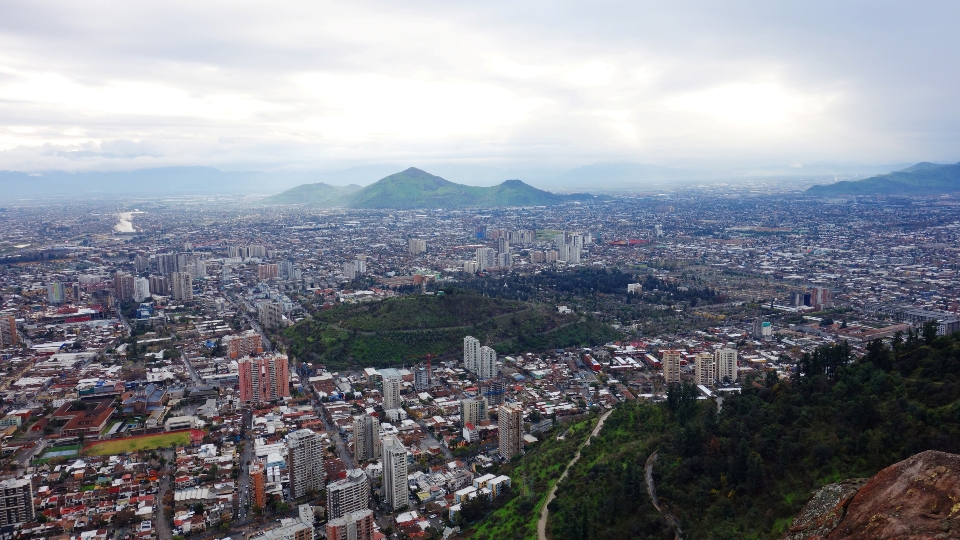
Updated 7/6/17, 7/21/17
Santiago (pop ~5.5 million) is the largest city in Chile one of the largest in the Americas. It is a huge, sprawling city that seems to go on forever when seen from the air. Its two most prominent features are: 1) The 65 story Gran Torre building, the tallest building in Latin America, and 2) The massive San Cristobel Hill that bisects the city. If you visit Santiago, it's worth seeing both attractions. The usual way to get up San Cristobel is by cable car, but motivated hikers can walk up a steep path. When you get to the top, please observe the numerous "silencio" signs as there is a shrine. You cannot miss the shrine because of the huge, 67 foot tall statue of the Virgin Mary that dominates the summit. The statue is so large that it can be seen from almost any point in the city on a clear day. The Hill is significant not only because of it symbolic importance to Santiago, but because it roughly separates the affluent neighborhoods from the poor ones. I don't have exact figures, but the gap between the rich and the poor seems wider than in the United States. There are millions living in slums on the poor side of town. We were warned not to drink the water as we got further away from the tall buildings downtown. Despite its quirks (or perhaps because of them) we all loved the city and many of us are talking about coming back.
Other than the language and signage being in Spanish, Santiago could pass for many other big cities. It has a subway, thriving markets, and many communal neighborhoods. The annual per capita income is about $24,000 USD. That doesn't sound like a lot, but I am told a well-appointed apartment in the city only goes for about $600 - $800 USD a month. There is a 10% income tax in the region, and sales taxes are built into the price tags of most items you buy. Americans might be jealous of the 10% figure, but I am told once that certain city services can be lacking. Most seriously, if you call the police, they may or may not arrive. The most common complaint from visitors usually concerns petty theft. One night, riding home from dinner, fellow ambassador Derek and I got ripped off by a cab driver. Just before we got to the hotel, the fare meter read "4,000" (about $6 USD.) Then just as we arrived, the meter suddenly read "20,000." The cab driver immediately asked for money and even offered us a piece of candy as a distraction. It happened so fast neither of us had time to think.

View from the top of San Cristobel Hill
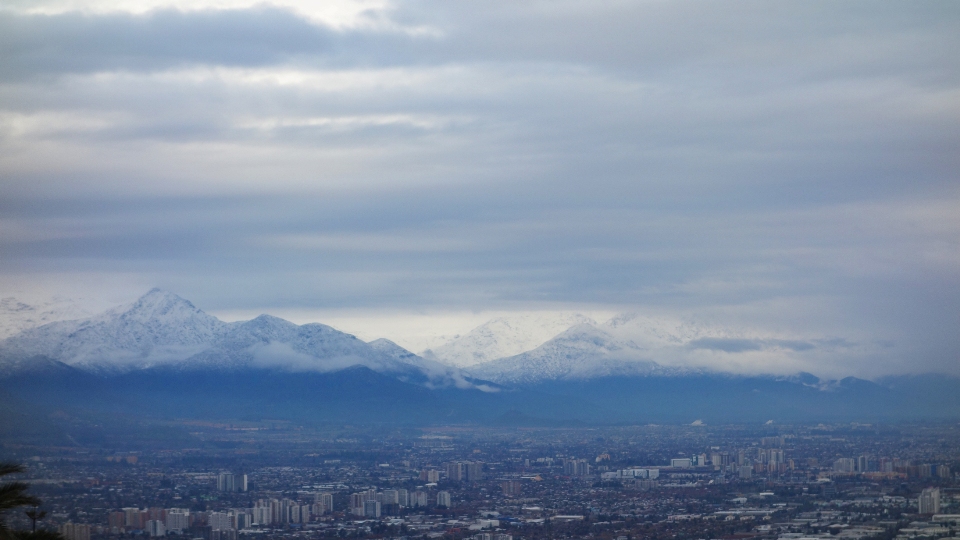
The Andes mountains in the distance - spectacular!
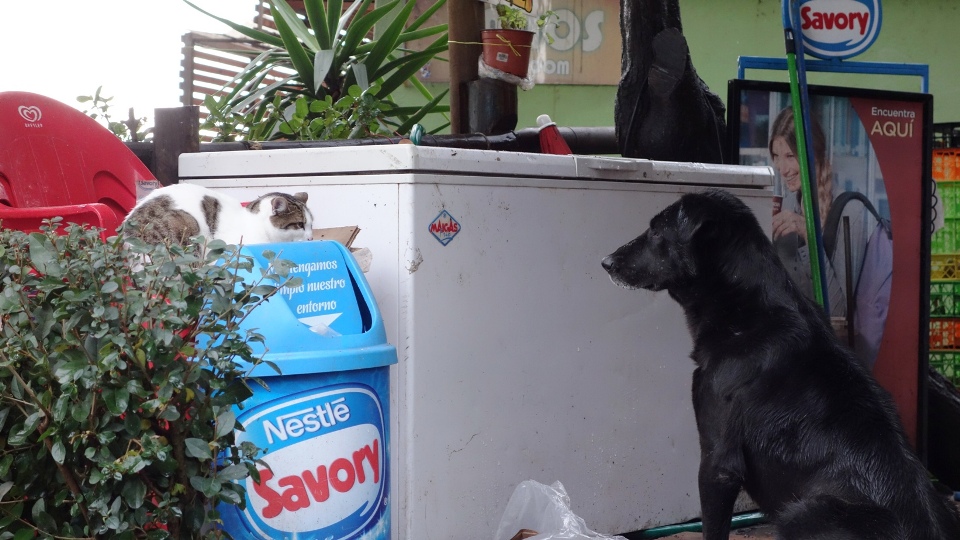
Stray dogs and cats were everywhere.
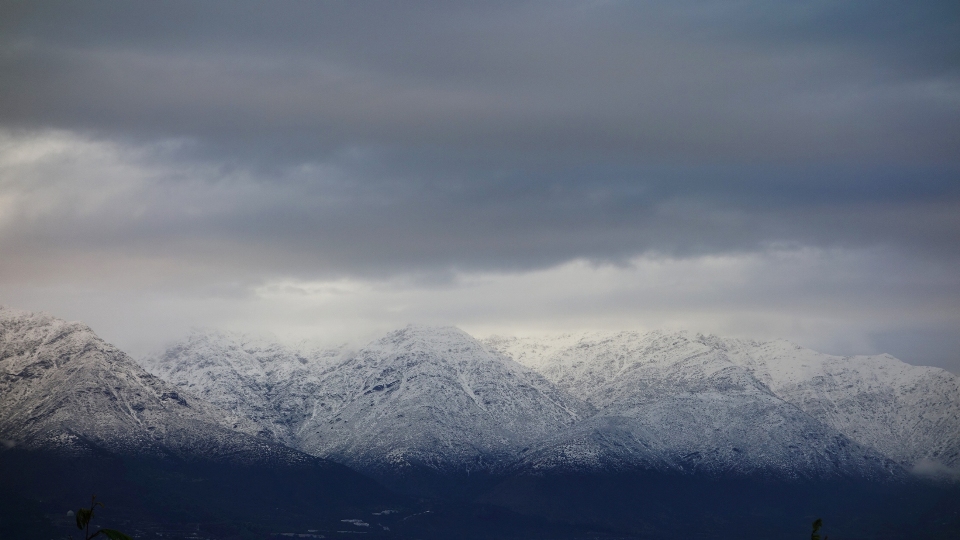
The Andes mountains.

(Above) "Ed, you're in one of the most exciting cities in the world. What do you want to do?" I wanted to find a local astronomy shop,
which sold a bunch of stuff I already own (prices are high here, BTW.)
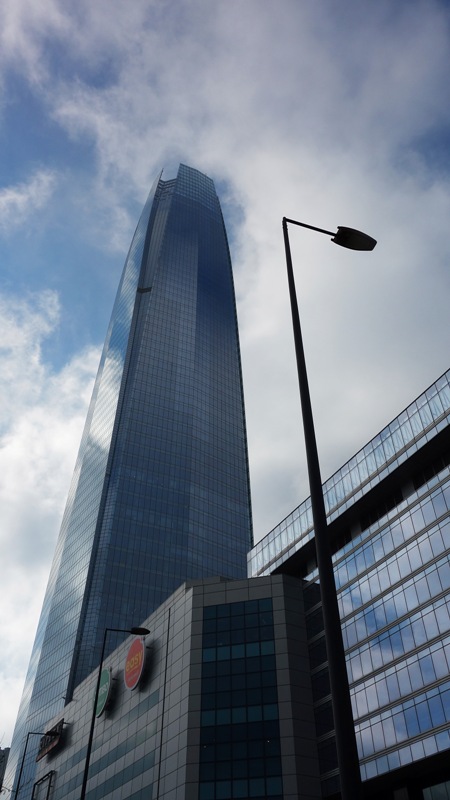
The 65 story Gran Torre de Santiago. There's a five level shopping mall at the base. "Retail Apocalypse" has not hit Chile yet. Small specialty stores
were thriving. I felt like I was in an American shopping mall from about 20 years ago.
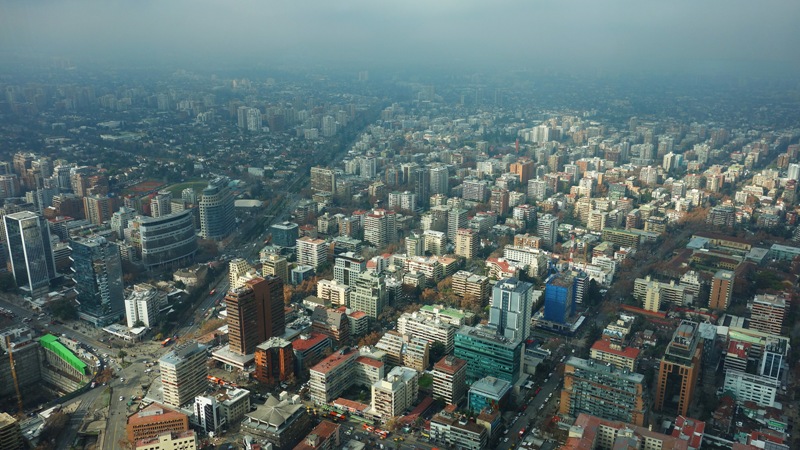
View from the top of the tower.
The coastal town of La Serena sits on the shores of the Pacific, several hundred miles north of Santiago. It's about a 90 minute flight from the big city. Although the population is listed at about 300,000, it feels much smaller. The city caters to tourists, especially in the summer, when beachgoers flood the large hotels along the coast. The place is an odd mix of lower middle-class residents and high end hotels. Despite its obvious choice as a tourist destination, I had the feeling that the place hasn't yet been discovered by the world at large. If you're looking for an out-of-the-way beach, this is a place to check out.
We were warned not to drink the water in La Serena. I stocked up on bottled water. Luckily there is a jumbo-sized supermarket in town called, well..."Jumbo." Jumbo is like a Wal-Mart Supercenter in the US. You can get everything from prepared meals to lawn tools there. We visited the AURA Recinto facilities and later that evening, the Cerro Mayu Observatory outside of town. Although the van ride to Cerro Mayu isn't that long, once you get outside the city limits the roads get narrow and dark really fast. We wound up lost in some farmer's field with a donkey blocking our path. Did I mention it was dark? This is Chile after all. The van got jammed on a dirt road with a 90-degree turn and couldn't make the three-point turn to turn around. Some of us had to get out and shout instructions to the driver to keep from going into the ditch. This was the only time during the trip I became remotely concerned for my safety. If we'd gone into the ditch, I have no idea how we would have gotten out (cell service is spotty in this region of Chile.)
From La Serena we made the two hour drive up to Gemini/CTIO, which turned out to be one of the highlights of the trip.
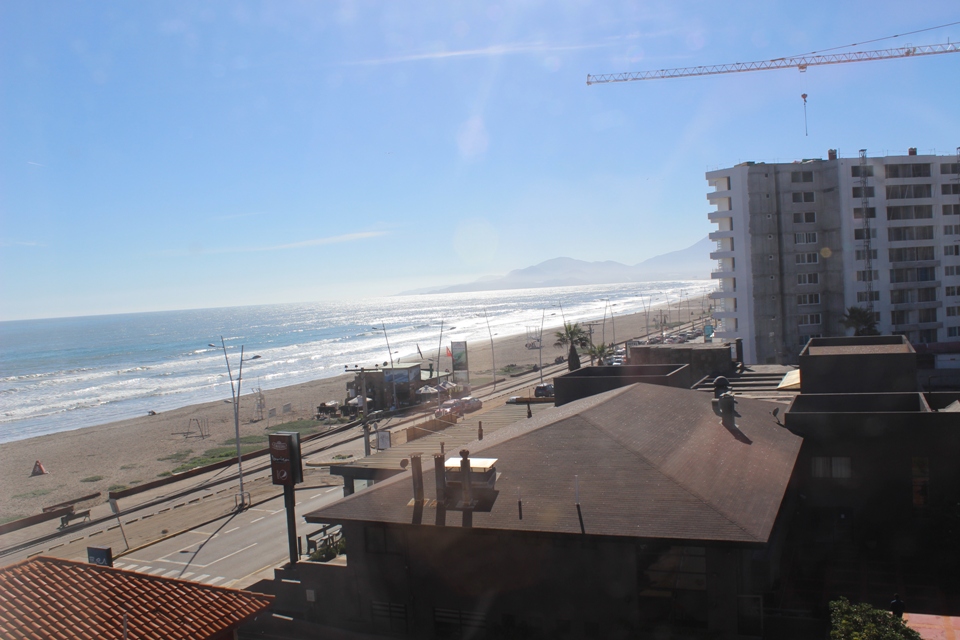


The beach town of La Serena.
San Pedro de Atacama - now we're talking! We flew north yet again to Calama, a copper mining town. There's not much to see in Calama, so we went straight to the village of San Pedro (pop ~4,600) about 60 miles away. Here we entered another world. The dirt streets are surrounded by high masonry walls. It's not a big town but since every intersection looks the same, it's easy to get turned around. The place looks like it came straight out of an old spaghetti western. I kept expecting to see Clint Eastwood walk out wearing a poncho. Here we were warned most sternly - do not drink the water. Do not brush you teeth with the water. If you take a shower, do not let the water get into your mouth. Last year someone accidentally drank some water out of the tap, immediately recognized his error, and spit it out. He was sick for days afterwards. Despite the warnings, this was my favorite place in Chile and I wished I could have stayed longer. I took hundreds of pictures here and I hope the sampling below give you a sense of the charm of the place.
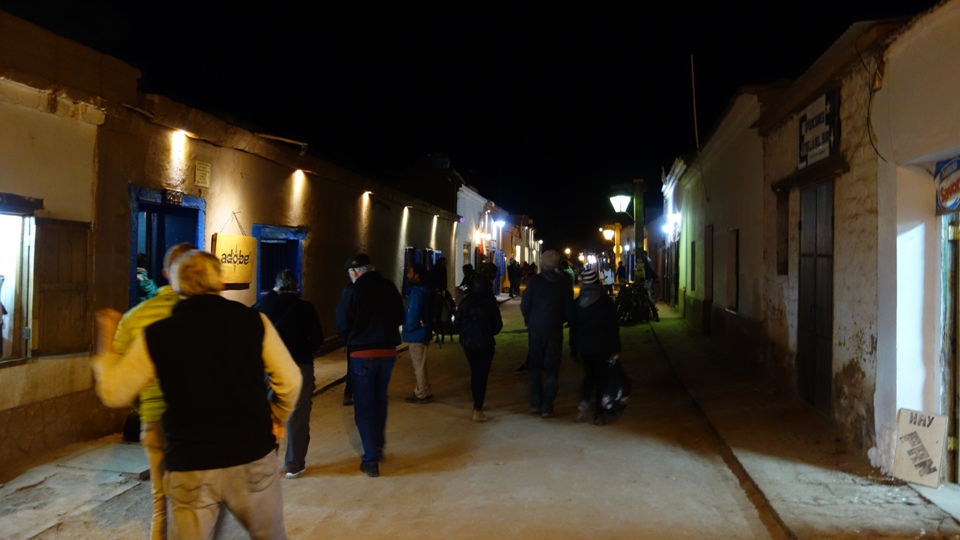


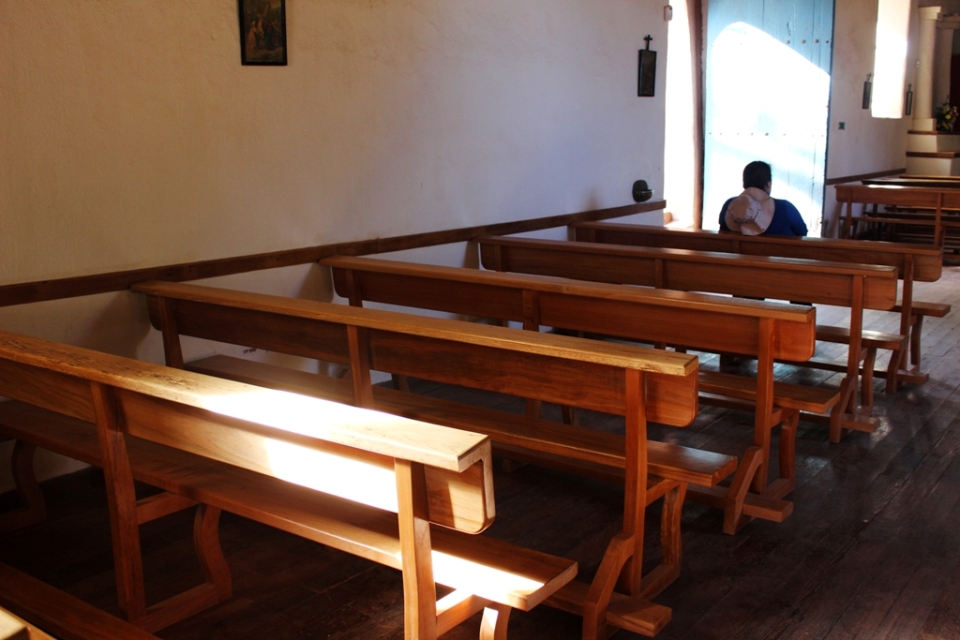


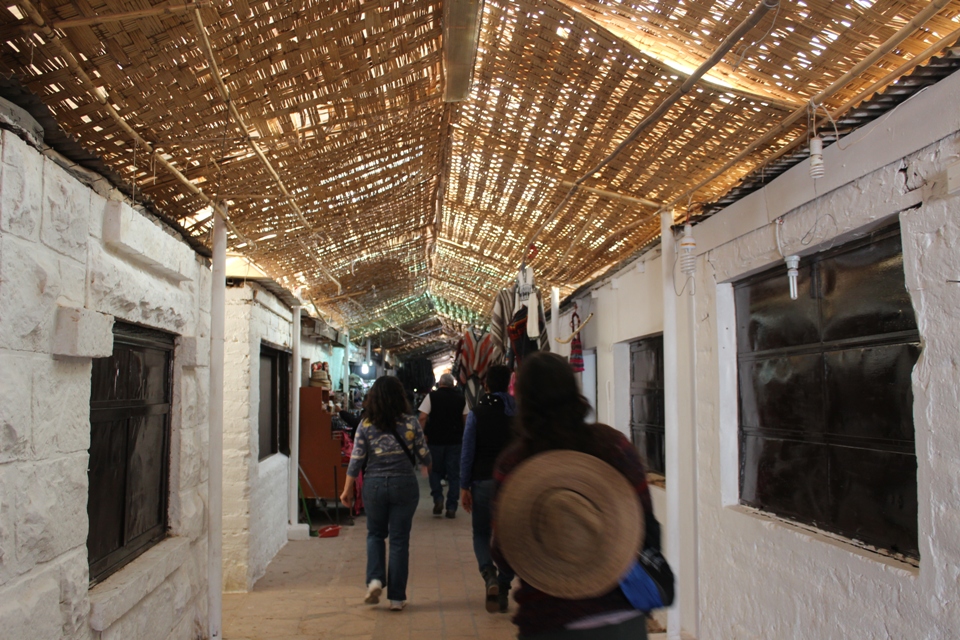
-Ed
1) Introduction - Ed Goes to Chile!
2) The cities, towns, and villages - Santiago, La Serena, and San Pedro (This Page)
3) The observatories and scientific installations (Part 1)
3a) The observatories and scientific installations (Part 2)